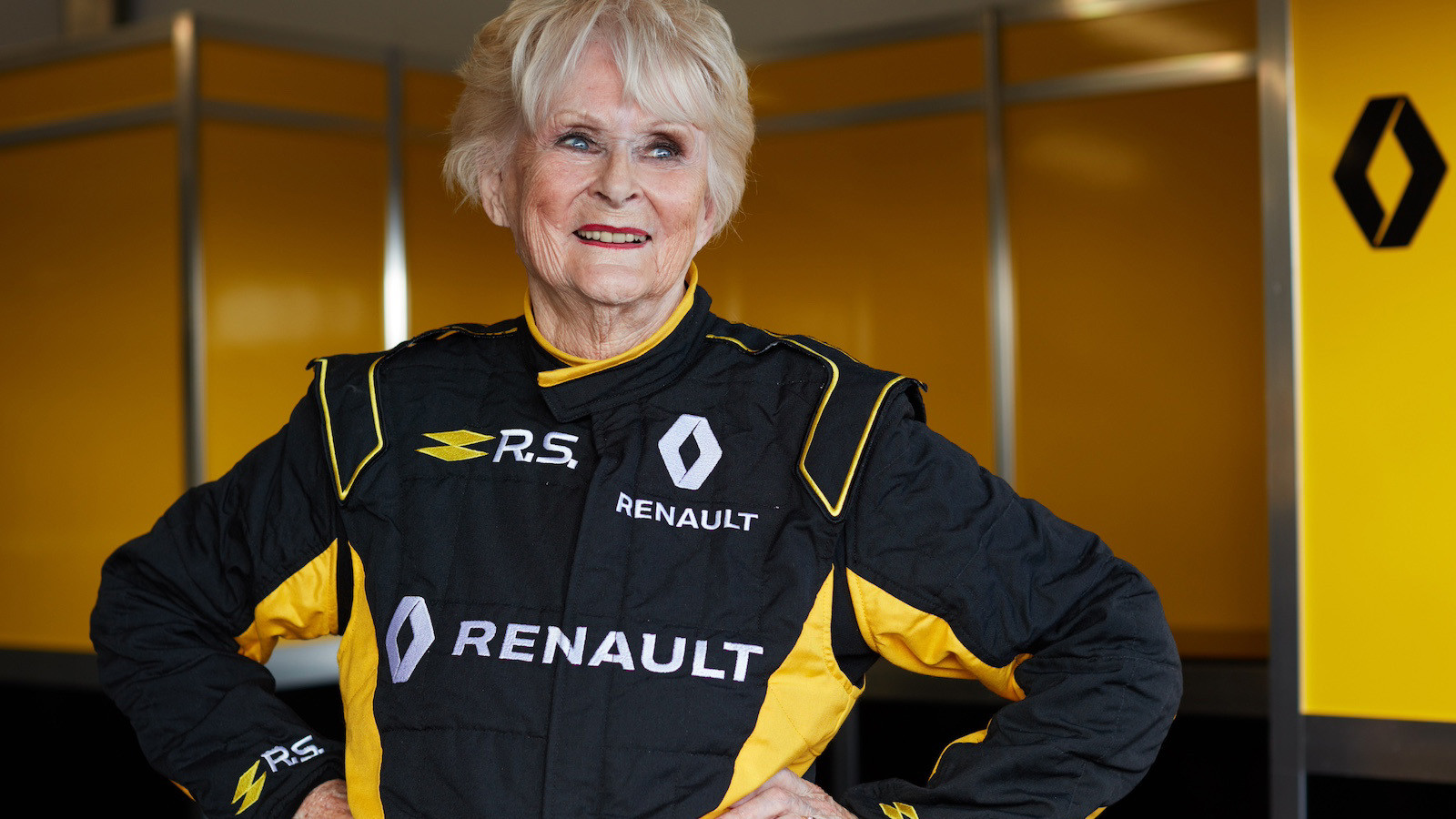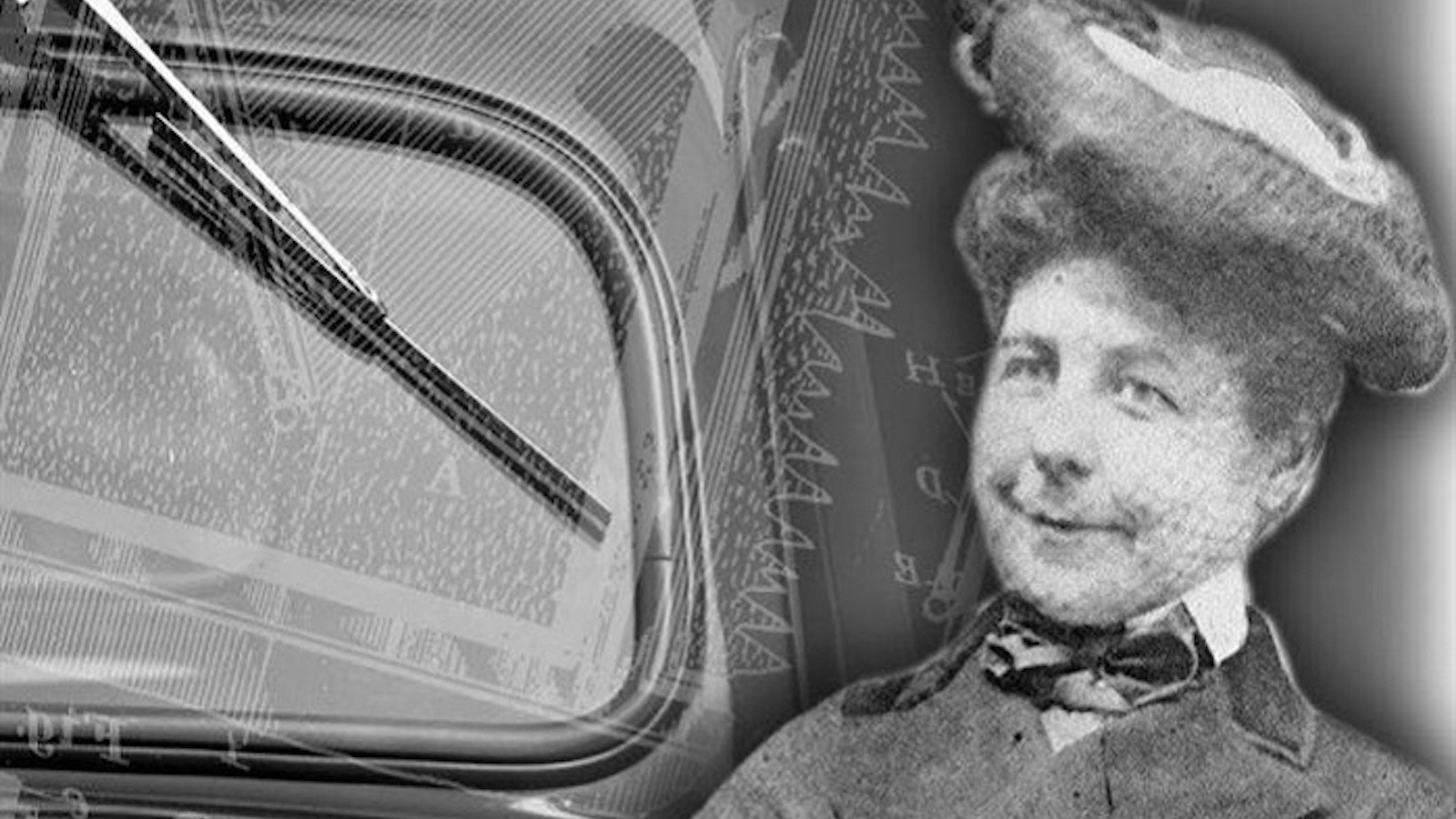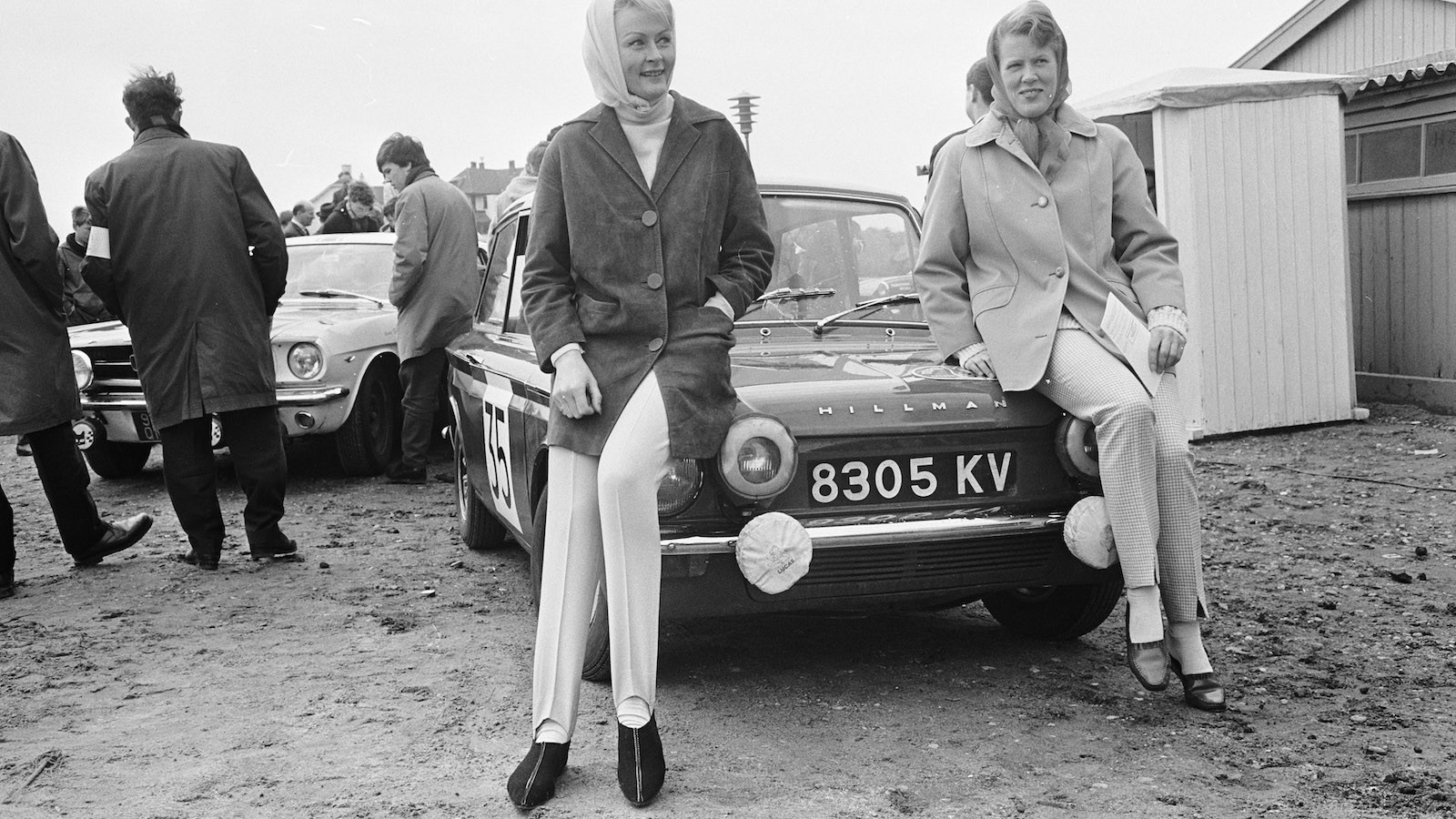-
 © Renault Sport
© Renault Sport -
 © Daimler AG
© Daimler AG -
 © Martin Lee/Creative Commons licence https://creativecommons.org/licenses/by-sa/2.0/deed.en
© Martin Lee/Creative Commons licence https://creativecommons.org/licenses/by-sa/2.0/deed.en -
 © Ford Motor Company
© Ford Motor Company -
 © Veloce Publishing
© Veloce Publishing -
 © Will Williams/Classic & Sports Car
© Will Williams/Classic & Sports Car -
 © Public domain
© Public domain -
 © Brooklands Museum/newspress.co.uk
© Brooklands Museum/newspress.co.uk -
 © Denso
© Denso -
 © Science History Institute/Creative Commons licence https://creativecommons.org/licenses/by-sa/3.0/deed.en
© Science History Institute/Creative Commons licence https://creativecommons.org/licenses/by-sa/3.0/deed.en -
 © Public domain
© Public domain -
 © Burlen
© Burlen -
 © newspress.co.uk/Race Retro
© newspress.co.uk/Race Retro -
 © Nissan Motor Co Ltd
© Nissan Motor Co Ltd -
 © Chevrolet
© Chevrolet -
 © Denso
© Denso -
 © Morrison_2001/Creative Commons licence https://creativecommons.org/licenses/by/2.0/deed.en
© Morrison_2001/Creative Commons licence https://creativecommons.org/licenses/by/2.0/deed.en -
 © Smithsonian Institute
© Smithsonian Institute -
 © Public domain
© Public domain -
 © Public domain
© Public domain -
 © Maserati
© Maserati
-
20 women who left their mark on motoring
Just as with any field of human endeavor, women have played a pivotal role in motoring.
Sadly, automotive history to date has often overlooked their contributions, so we are here to set the record straight, as we mark International Women’s Day on March 8.
The following are just a handful of the great many women who have influenced our motoring landscape.
Our 20-strong list, presented in no particular order, is by no means exhaustive, but hopefully it reinforces how female innovators, drivers and more have made an invaluable contribution to cars and motorsport across the decades.
Some you’ll likely know already, others will hopefully come as a pleasant surprise.
-
1. Bertha Benz – mother of the motor car
If Carl Benz is seen as the father of the automobile, then Bertha Benz is undoubtedly its mother.
Carl’s initial move into motoring was in 1871 when he founded his first engineering firm in Mannheim with his mechanic partner August Ritter. Having met his future wife Bertha by 1869, she had helped in those early days to provide the funds needed to keep her soon-to-be husband’s pet project alive.
She also had a keen interest in the motor car, and apparently shared ideas and helped with the practical aspects of getting that first Benz up and running – reputedly winding wires for the induction coils used in the ignition system.
On January 29, 1886, Carl Benz filed patent number 37435 for his ‘motor car with gas-engine operation’, which was met with mild apathy. The following years saw very little interest in the car, with the couple’s efforts and expense seemingly at risk of coming to nought. By August 1888, Bertha had decided to rectify the situation…
Taking the world’s first motor car, without her husband’s knowledge, she undertook a 66-mile (110km) journey from Mannheim to Pforzheim to see her mother. On board were her two sons and an innate Benz family belief in Carl’s invention.
Bertha apparently had to keep the first Benz running by conducting repairs en route and stopping for fuel. She also allegedly consulted with a blacksmith about a more effective brake lining.
The successful first long-distance drive (and return journey) gained vast press attention, kick-starting our love affair with the car, saving the Benz family business in the process.
-
2. Lella Lombardi – only women to score points in F1
Italian racer Maria Grazia ‘Lella’ Lombardi worked hard driving the van for her family business (her father was a butcher), in order to save enough money to buy her first racing car in 1965.
By the mid-1970s, Lella had impressed enough within the world of open-wheel racing to gain a test drive in a Formula 5000 Lola, which she took to a fifth-place finish in the 1974 ShellSPORT F5000 series.
That led to a Formula One drive for March the following year in which she became only the second woman to officially qualify for a Grand Prix – in the process placing ahead of former world champion Graham Hill.
Her second F1 race in Spain saw her score half a point for finishing sixth – the only points ever recorded by a woman in F1 – after the race ended early, due to a fatal crash.
With a run of mechanical problems – including a damaged bulkhead that Lombardi had complained of but had been ignored – she left F1 for NASCAR.
Various drives in sports cars and Touring Cars followed, where she found even greater success. However, she is probably best known for, to date, being the only woman to have scored points in F1.
-
3. Margaret A Wilcox – inventor of the car heater
Comfort wasn’t a high priority for makers of early automobiles. The challenge of simply making them work reliably was difficult enough, with engineering and metallurgy pushed to the limit.
However, a forward-thinking American woman by the name of Margaret A Wilcox had enough vision to patent an innovative in-car heating system in 1893.
The genius of Margaret’s invention was that it used spent heat from the combustion process to warm the cabin. It’s the fundamental basis by which almost all car-heating systems have operated ever since, right up to the present day.
It was that incredible foresight and determination in an era when women filing for patents – especially in engineering – faced considerable hurdles, that made her accomplishment even more impressive.
The first car to make use of Margaret’s heater concept, from the factory (aftermarket heaters had been available before), was the 1929 Ford Model A.
-
4. Pat Moss-Carlsson – winning rally driver
One of the most successful women in motorsport, Pat Moss-Carlsson rallied various cars to great success from the 1950s through to the mid-1970s.
Initially a famed show jumper, alongside her arguably more famous older brother Stirling, the pair were presented to King George VI after winning the 1945 Windsor Cup horse trials.
Horsepower of one sort or another would play a consistent part of her life, right up to her death in October 2008. Shortly before her passing, she was apparently caught speeding while towing a horsebox!
Rallying played an equally important part in the life of Pat Moss-Carlsson. She claimed three outright rally victories and seven podiums during her career, and married fellow driver Erik Carlsson.
In the picture above, she is on the left, navigator Ann Wisdom on the right.
Pat secured the European Ladies’ Rally Championship title on five occasions (1958, 1960, 1962, 1964 and 1965), however her outright wins in international rallying are what set her apart.
The aforementioned three wins and seven podium finishes are quite the scorecard, whatever your gender.
-
5. Suzanne E Vanderbilt – Chevrolet chief designer
American auto makers in the 1950s realized, somewhat reluctantly, that they’d failed to target half the human population!
The archaic view back then was that designs, particularly those within the cabin, needed a woman’s touch. The Big Three all scrabbled to employ female designers, with General Motors vice president Harley Earl kicking things off by introducing the questionably named ‘Damsels of Design’.
Other than the two-dimensional marketing appeal, several of these highly educated and motivated women went on to hold important design roles across the American automotive landscape.
Perhaps the most successful of them was Suzanne Vanderbilt.
She started her career at GM as a junior interior designer for Chevrolet, but it culminated in her taking on the role of senior designer for Chevrolet (interiors), later becoming chief designer at Chevrolet’s Interior Studio number two.
She also filed a patent for the inflatable back support, and came up with ideas for both the child-safety latch and child seat.
-
6. Clärenore Stinnes – first round-world drive
Think of Clärenore Stinnes as a bit like the German automotive equivalent of American aviator Amelia Earhart.
She was a racing driver in the 1920s who decided to swap the circuit for long-distance drives – very long distance!
Clärenore had won 17 races by the time she partnered with photographer and navigator Carl-Axel Söderström for an attempt at circumnavigating the globe by car.
Together with two mechanics and a support vehicle full of spare parts, the pair took their Adler Standard 6 – provided by the Adler car company – around the world in a 1927 press stunt, designed to promote the robust nature of the German car and parts industry. Sponsors included Bosch, Adler (of course) and oil company Aral.
Two years after leaving, and having covered a massive 29,000 miles (47,000km) – crossing terrain as inhospitable as the Andes mountains, Siberian tundra, and the deserts of Bagdad and Tehran – Carl-Axel Söderström and Clärenore Stinnes arrived back in Berlin. They married the following year.
-
7. Kay Petre – Brooklands legend
Kathleen ‘Kay’ Petre married lively aviator Henry Petre in 1929 and the pair developed a keen interest in motor racing, spending plenty of time at Brooklands.
Noticing his wife’s interest in motorsport, Henry bought Kay a Wolseley Hornet Special, with which she caught the racing bug.
By 1933 she’d bought her first Bugatti and used it to compete, with great success, in hillclimbs at Brooklands and Shelsley Walsh.
Kay went on to take Brooklands lap records in the 1930s, with the contrasting image of the enormous 10.5-liter V12 Delage racing car she used and her diminutive stature sticking in the minds of many.
Apparently, she was so small that she needed wooden boxes on her feet to reach the pedals! Not that this stopped her.
She set the ladies’ Outer Circuit lap record of 124.14mph in her two-liter Bugatti, then later 129.58mph and 134.75mph in the aforementioned Delage.
Her battles with fellow female racer Gwenda Stewart came to a head in 1935 as the pair vied for the unofficial title of Queen of Brooklands – it went to Gwenda, who managed a forever unbeatable lap record speed of 135.95mph.
-
8. Mary Anderson – inventor of the windshield wiper
In the early years of the 20th century, clearing precipitation from the windshield of a motor car in inclement weather was usually done by pulling over and manually wiping the glass.
The more adventurous (or less safety conscious) driver would lean out the window on the move and wipe what he/she could with their spare hand.
Not exactly ideal. Yet few, other than Mary Anderson, thought of a better solution.
Allegedly, the idea for the driver-operated windshield wiper came to Mary during a trip in a trolley car from her native Alabama to New York.
The driver had been struggling to see the route ahead, just as Mary had been deprived of the sights, so she created a patent shortly after for a swinging arm that could be operated from within the cabin and was attached to a spring-loaded rubber blade. The rest, as they say, is history.
-
9. Stephanie Kwolek – inventor of Kevlar
Chemists aren’t often recognized by car enthusiasts, but several had such huge impacts on motoring that they certainly deserve mention here, including Stephanie Kwolek.
During her work for the DuPont chemical company, she was tasked with finding the next generation of synthetic fibers that could perform under extreme conditions.
Stephanie began synthesizing and experimenting with spun aromatic polyamides and determined that, with a suitable dissolving solvent, a strong flame-resistant fiber material could be spun.
This discovery led to the release of Nomex in 1961, with Stephanie going even further still, when her fiber investigations led her to produce Kevlar in 1966.
Known for its bullet-stopping abilities, this lightweight wonder material – that’s five times stronger than steel and doesn’t corrode – also makes the ideal inner structure for pneumatic tires, as well as many other vital industrial applications.
-
10. Rosemary Smith – race and rally driver
Though arguably most, if not all, the women on our list have faced discrimination at one time or another, perhaps none had to endure it quite as blatantly as Irish rally driver Rosemary Smith, pictured here on the left.
Despite spending most of her time rallying, she was just as at home on the circuit, which is why she attempted to enter Le Mans in 1962.
Unfortunately, this highly accomplished driver was allegedly refused entry, simply because she was a woman, a restriction that the organizers wouldn’t remove until 1971.
In rallying, Rosemary was hugely competitive. She is most famous for her works drives for the Rootes Group – in particular her time behind the wheel of the Hillman Imp – but she also campaigned Fords, Minis, and even the odd sports car and formula machine.
She also raced alongside American movie-star royalty Steve McQueen and Paul Newman at Daytona and Sebring.
That wasn’t the limit of her brushes with fame either, because after winning the Tulip Rally outright in 1965, it is said she received a bouquet of flowers from Richard Burton and Elizabeth Taylor.
More recently, in 2017, at the age of 79, she tested a then-current Renault F1 car, becoming the oldest driver ever to do so.
Sadly, Rosemary passed away in December 2023, but undoubtedly left an indelible mark on motoring.
-
11. Beatrice Shilling – racer and Merlin engineer
Beatrice Shilling became famous for curing one of the Rolls-Royce Merlin engine’s worst attributes.
During the extreme maneuvers undertaken by fighter pilots in the Battle of Britain, it was found that Merlin-equipped aircraft (mainly Hurricanes and Spitfires) tended to dramatically lose power under negative G maneuvers (diving or inverted).
Beatrice came up with the RAE Restrictor that allowed pilots to briefly maintain power under these conditions, greatly improving their performance versus unaffected fuel-injected German fighters.
Other than helping to win the war – for which she was awarded the Order of the British Empire in 1949 by King George VI – she was also an avid ’bike and sports-car racer.
A recipient of the British Motorcycle Racing Club’s Gold Star award, for lapping Brooklands at more than 100mph on two wheels, she proved just as fearless on four wheels.
After the war, Beatrice was often seen mixing it among the pack at Goodwood Members’ Meeting races, in machines she’d modified for competition with her husband George.
-
12. Michèle Mouton – Group B rally legend and voice of women in motorsport
To date, there has never been a more successful female rally driver in the World Rally Championship era than Michèle Mouton.
Not only did she go head-to-head with her male rivals, and often beat them at international events, but she also did so during the fearsome Group B era.
Possibly the pinnacle of rallying, where speed and power were comparable to that seen in F1, the early- to mid-1980s WRC was fraught with danger.
In this maelstrom of masculinity, Michèle not only managed to win four WRC events outright, but also scored enough points (97) during the 1982 season to place second overall, considerably helping to secure the manufacturers’ title for Audi that year.
She also was victorious at Pikes Peak hillclimb in 1985, breaking the previous course record by 13 secs in the process.
Michèle went on to found and co-organize the Race of Champions event in 1988, and is now a pivotal female voice within the FIA (Fédération Internationale de l’Automobile) in her role as both founding president of the Women in Motorsport commission and as a member of the International Olympic Committee for Women in Sport.
-
13. Diane Allen – former Nissan senior design manager
With a career that started at Nissan Design America (NDA), back in 1984, Diane Allen has been involved in developing the styling of several key Nissan models.
She has also won accolades for her work, including gold and silver awards for Industrial Design Excellence and an Apex Product of Excellence award.
The career Nissan designer is probably best known, however, for her work on the 350Z. Diane was senior design manager for the team that developed this internationally important sports car, winning many more gongs in the process.
More recently, her senior design role at NDA saw her take responsibility for Nissan’s TITAN full-size truck, as well as filing patents for her innovative Utili-track™ bed.
She has since retired. -
14. Crystal Windham – GM’s first black female design director
Just like our previous entry, Diane Allen, Crystal Windham spent much of her career at her auto maker of choice; for Detroit-born Crystal that was General Motors.
The College for Creative Studies industrial design degree holder (she also has an MBA from the University of Detroit Mercy) began her career at GM in 1994 as an intern. She’s since worked across a broad range of projects and brands.
She made her way up to executive director of global industrial design, becoming the first black woman in the role.
Crystal has been credited with overseeing several award-winning designs and, most recently, has apparently been busy envisioning a new lunar rover.
-
15. Helen Blair Barlett – better-insulated spark plug
Another scientist with a more practical application of her work in the automotive field was Helen Blair Barlett
The PhD mineralogist at Ohio State university left education in 1931, to work for AC Spark Plugs in the ceramic-research department of the General Motors subsidiary.
The insulated spark plug had already been invented but, at the time, it was made using a potter’s wheel from Mica ceramic and was extremely fragile.
Helen’s work involved alumina ceramics, which proved to be a much more robust and efficient insulator for spark plugs than Mica.
This discovery led to seven patents filed by her for a variety of applications, four of which related to her greatly improved spark-plug insulator. Her invention hugely prolonged the life of spark plugs, which previously could fail or foul in as little as 100 miles.
AC management acknowledged Helen’s developments by promoting her to a supervisor role in 1956, and in 1959 to a fully fledged research scientist. She was one of the first women to occupy a senior technical position at GM.
According to her memorial in the American Mineralogist, she also worked as part of the Manhattan Project at the Massachusetts Institute of Technology (MIT) where she received a citation for her work.
-
16. Danica Patrick – first female IndyCar winner
America’s premier open-wheel motor-racing competition can chart its roots back to 1905, making it 45 years older than Formula One.
However, it took until 2008 for a woman to lift the winner’s trophy. Danica Patrick won an IndyCar 300 race at Twin Ring Motegi in Japan, bringing her Andretti Green Racing Dallara-Honda home 5.86 secs ahead of the pack, finishing the season sixth overall.
Her first victory, fastest practice lap at the 2005 Indy 500 and a third-place finish in the 2004 Toyota Formula Atlantic series silenced the majority of her critics, who were quick to dismiss the young woman as a mere marketing gimmick.
Danica left IndyCar for NASCAR in 2012, where she claimed pole position at the 2013 Daytona 500, making her the first woman to start that race from pole.
She retired from racing in 2017 and has since written several books, and works as a motorsport commentator.
-
17. Katharine Burr Blodgett – non-reflective glass
The brilliant, American-born Katharine Burr Blodgett was one of two women featured here to deploy her considerable talents in the field of chemistry.
She is also credited as the first woman to graduate from the University of Cambridge with a PhD in Physics, in 1926.
After her studies, Katharine moved to New York and was employed by General Electric in its Schenectady research laboratory. Here she worked with Irving Langmuir on very thin films suspended on top of fluids, only a few microns thick.
During this work, she discovered that a single molecule layer of barium on glass greatly improved its ability to transmit light, an application that was quickly picked up lens makers.
According to the University of Cambridge, the first major motion picture shot using Katharine’s barium lens was the 1939 multi-Academy Award winner Gone with the Wind.
Just as she’d made glass clearer, she went on to develop a coating that also hugely reduced the amount it reflected light, technology soon picked up by the automotive industry, where we enjoy clear, non-reflective windshields to this day.
-
18. Hedy Lamarr – frequency-hopping technology
Austrian-born Jewish actress Hedy Lemarr was one of the brightest stars in Hollywood during the 1930s and 1940s, yet few knew then (or now) of her other skills.
Appalled by the rise of fascism and worried for the safety of her family back home, Hedy chatted with composer George Antheil at a dinner party in 1940 and told him of an idea she’d had to beat German jamming systems.
Among her many ideas, including one for an improved traffic light, she mentioned this constantly hopping frequency method of communication, which would allow US torpedoes to hit their targets without jamming.
George Antheil recognized the brilliance of her concept and had the technical know-how to help realize it. The system was patented in August 1942 but was rejected by the US Navy, who suspected Hedy could be a spy.
However, the technology was finally adopted in the 1960s and worked exactly as planned. It’s gone on to form the fundamental ingredient that makes cellular phones, GPS and Bluetooth devices function without interference, which are also used by the automotive industry today.
-
19. Dorothy Levitt – inventor of the rear-view mirror
In her 1909-published book The Woman and the Car: A Chatty Little Handbook for All Women who Motor or who Want to Motor, Dorothy Levitt suggested that a ladies’ compact mirror gave a useful rear view while driving.
This idea was quickly adopted by motoring manufacturers, giving us the rear-view mirror.
However, Dorothy’s contribution to motoring goes even further, because she was also a renowned racer, and both a land- and water-speed record holder.
Racing Napiers while breaking speed records on land and water in the same firm’s machines, seemed to come naturally to Dorothy, who is cited as being the world’s first female racing driver.
Her innate interest and knowledge of motor cars was extremely unusual in the Edwardian era. Refusing to listen to men telling her otherwise, she pursued a career in motoring, going on to, it’s said, teach royalty to drive, including Queen Alexandra and her three daughters.
-
20. Maria Teresa de Filippis – first female Grand Prix driver
According to racing royalty Juan Manuel Fangio, Maria Teresa de Filippis was apparently told by the Argentine; ‘You go too fast, you take too many risks’.
In the 1950s, F1 was filled with risk, with deaths happening regularly.
Although it was more common for women to race with men in the early years of motorsport, by the middle of the 20th century, it’d become a far less frequent occurrence.
Coming from an Italian automotive family – her father was an engineer and her three brothers competed – it was perhaps inevitable that Maria would catch the racing bug.
She easily overshadowed her siblings, first competing in 750cc Italian championships before securing a works seat for Maserati in 1955.
This evolved into Grand Prix drives in 1958-’59 and although her career in F1 was brief (she left of her own accord after witnessing a fatal crash), it paved the way for other female racers.
